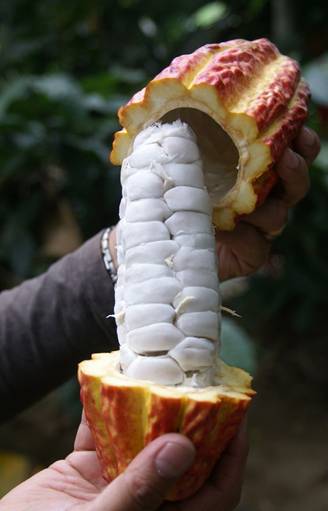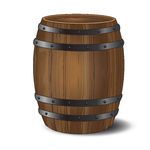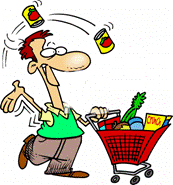
Salty Sam’s Fun Blog for Children
Number 383
Fair Trade
Hello Everyone

Have you ever seen the logo shown in this picture on a banana in your lunch box and wondered what it meant?
lf you look around, you will see this symbol on goods other than bananas.
Hundreds of years ago, 80% of the British diet would have been made up from bread and ale. Bread is a carbohydrate which gave people lots of energy to work on the land. All the food that people ate was what was produced locally; it would not have been transported very far before it was eaten. This was the same story all over Europe.
Windmills were a familiar sight in the landscape and millers would grind grain collected from the crops in the field to make flour for baked goods. Millers knew their trade well, and would make good money because lots of people would want to use their services.
The grains were ground very quickly by the heavy machinery in the mill. The miller would test the quality of the flour by rubbing it between his thumb and fingers to see how fine it was.
He used the ‘rule of thumb’.
People would have their own vegetable plots around their cottages and here they would grow vegetables and herbs. Herbs would flavour food and also be used for making home-made medicines.
Some cottagers might also keep a pig in a pen in their garden as well.
ln Victorian times, lots of people left the land to go and live in large cities and work in factories. This time was known as the lndustrial Revolution.
There were slaughter houses inside the big cities. Animals were brought there in large groups to be killed. This meant that the meat could be kept fresh as it travelled only a short distance to people’s homes.
The Victorian Era was a time of great change. At this time, ships were carrying large quantities of food from other countries; the kind of food that could not be grown here like sugar from sugar cane and tropical fruits.
When steamships were invented, larger loads could be carried and more quickly than ever before.
Because of this trade, people’s diet became much more varied.
ln those days, very often farms and plantations abroad were owned and managed by Europeans.
Today, they can be owned by local people too.
These farmers often grow food that we cannot grow in colder, northern countries.
ln order to help try and support producers in developing countries, a movement was started.
lt works to achieve better trading conditions between the producers and the consumers who may live in the same country, or other countries. These other countries may be richer.
The movement is not just concerned with payments though, it looks at social and environmental factors relating to food production in developing nations.
The commodity trading overlooked by the Fairtrade movement relates to mainly coffee, tea, cocoa, sugar, cotton, fruit, rice, spices, nuts, honey, chocolate and also gold. Even handicrafts like printed fabrics can be included; but coffee is by far, the commodity traded the most.
The movement acts as a go-between to insure respect and fairness is shown to growers on small farms. This process can increase wages for the workers.
Sometimes, farmers band together to form a company. This is called a cooperative. There are many advantages to working in a cooperative. You can operate under one management system; you can share equipment and knowledge.
The members can plan for the future together, rather than struggle alone.
Whole communities can benefit from increased wealth; with clean water projects, clinics and new schools being set up.
Here, consumers in shops can choose to support the growers and the Fairtrade scheme by selecting items of shopping with the distinctive label on the packaging.
ln Britain, there are towns, schools, universities and churches involved with the Fairtrade Scheme. They are dedicated to learning about Fairtrade issues and then educating other people in their community about the scheme; as well as buying Fairtrade products to use.
The Fairtrade movement continues to try to improve its channels of communication and the education of locals in developing nations to show them how they can be helped.
lt gives communities abroad opportunities and support and very importantly, the dignity of earning a good living rather than having to rely on charity to raise them up from poverty.
You may have a school that buys Fairtrade products, or you may have some in your kitchen cabinets.
When you see the logo at the top of the page again, you will know what it means now, won’t you?
lf you like my blog, please support it by telling all your friends and followers about it.
Thank you!
And see you again next Fun Friday!
Love and kisses
Salty Sam

www.christina-sinclair.com


Bill and Bob’s Joke of the Week![]()
![]()
Bill: lt says in the Rocky Bay Gazette that there was a serious incident in the Rocky Bay Supermarket this week.
Bob: Oh no! What happened?
Bill: Apparently a robbery was thwarted by a have-a-go assistant who attacked the robber with a labelling gun.
Police are looking for a man with a price on his head.
Bob: Tee hee hee!

Salty Sam © Christina Sinclair 2015
Unauthorized use and/or duplication of material from this blog without express and written permission from this blog’s author and owner is strictly prohibited.
Links may be used to www.christina-sinclair.com

Picture Gallery
 Chocolate comes from this plant
Chocolate comes from this plant
 Tea pickers
Tea pickers
 Cotton plant
Cotton plant


Everyone can play their part


 THE SALTY SAM NEWS DESK
THE SALTY SAM NEWS DESK

One day this week, Captain Jack left his boathouse in his car with a very strange load strapped onto the trailer in tow.
He had a huge pile of old barrels stacked up on the trailer.
After leaving his boathouse, he made his way very slowly to Auntie Alice’s cottage.
He wanted to spend the whole day there and so I had agreed to take over piloting his boat for trips around the lighthouse – well it’s my lighthouse actually.
In Rocky Bay in the summer, everything is open seven days a week for the tourists. That means if someone wants a day off, they have to get someone else to step in and cover for them.
Of course, I am an expert in being able to tell all the passengers on the boat about my lighthouse!

Captain Jack had got the barrels from his friend Reg at the Rusty Anchor Inn on the Rocky Bay Harbour Wall. The barrels had all been broken in some way and were no good for storing beer or brandy or anything else the state they were in.
The brewery that supplied the Rusty Anchor did not want them anymore.
But Captain Jack did.
He took them back to his boathouse and repaired the cracks and holes with blocks of wood, glue and tar.
What did he want them for? I hear you ask.
Well, he was a man with a plan!
Auntie Alice has increased the vegetable production in her garden recently.
She has two green houses now instead of one and has been harvesting crops all winter because of it.
Now that tourist season is here and the guest houses are filling up with summer visitors, the need for food in the Rocky Bay Tea Rooms and the Rocky Bay Café and the Rusty Anchor has increased.
And growing vegetables requires water; sometimes lots of it, when the weather is dry.
Captain Jack had made the old barrels into water butts!

He worked hard all day to fix guttering up at the side of the new green house and all of the little sheds in the garden that didn’t have a water butt next to them already, like the tool shed and the apple store.
Auntie Alice held the ladder and passed tools and fixings up to him. This way the work could get done more quickly.
The old greenhouse already had a water butt.
The cottage had two. They had been fixed up last year when the thatch on the roof had been replaced.
The idea of having the water butts was that when it rains, all the water that falls on the roofs of all the buildings, large and small, on Auntie Alice’s property, will run into the guttering at the side of each roof and then down a pipe into a water butt.

The water will stay in the butt until it is taken to water the garden.
This water is not as pure as water taken from a tap. It is called ‘grey water’.
You can’t drink it, but it is perfectly alright to use to water you garden.
Some people use grey water to flush their toilets.
So once water butts fill up with water there are two ways to get it out and into a watering can.
You can have a tap at the bottom of the butt which you can turn in order to release some water, and then you turn it off again – or you can just dip the watering can into the top of the butt. Auntie Alice will have to do this with the barrels because they don’t have taps on them like the big ones next to her cottage.
But the barrels were free – so you can’t really complain!
There are covers on the barrels to stop squirrels falling into the water and midges breeding in the water.
If a barrel doesn’t have a cover, a thin layer of cooking oil poured onto the top of the water will stop midges breeding in it. And a grill fixed to the top of the barrel will stop squirrels falling in and drowning. This was a very important thing to do.


*********************
*********************

 Quick Quiz
Quick Quiz
Can you fill in the gaps?
- 26 l _ _ _ _ _ s i _ t _ _ a _ _ _ _ _ _ t
- 8 p _ _ _ _ _ s i _ t _ _ S _ _ _ r S _ _ _ _ m
- 60 m _ _ _ _ _ s i _ a _ h _ _ r
- 1 S _ n i _ t _ _ s _ y
- 4 w _ _ _ _ s o _ a c _ r
- 12 h _ _ _ _ _ _ _ e s _ _ _ s
- 4 c _ _ _ _ _ s o _ a s _ _ _ _ e
- 2 s _ _ _ _ _ s o _ a j _ _ _ _ t
- 28 d _ _ s i _ a l _ _ _ r m _ _ _ h




lt’s the Weekend!

HOW TO MAKE A CHlCK EGG COSY
Just imagine how cheerful this little egg cosy would look to someone who was ill in bed – or someone stumbling out of bed in the morning off to do a hard day’s work!
CHICK EGG COSY (KNIT TWO)
Using 4mm knitting needles and golden yellow dk yarn cast on 18 stitches
Slip 1 (knit 1, purl 1) repeat last 2 stitches to last stitch, knit 1
Repeat the last row 3 times
Knit 12 rows of stocking stitch
Decrease 1 stitch at the beginning of the next 8 rows of stocking stitch
Don’t cast off – cut off your yarn with about 20cm left to thread through the stitches
TO MAKE UP
- Embroider a face onto one knitted piece.
- The eyes are French knots made with the yarn wrapped twice around the needle – don’t put your yarn needle back into the hole you pulled it out of
- The beak is a triangle of red yarn
- Pull the stitches tight at the top of the egg cosy and sew down the sides using over-sew stitching with right sides together.

Please note that the material on this blog is for personal use and for use in classrooms only.
It is a copyright infringement and, therefore, illegal under international law to sell items made with these patterns.
Use of the toys and projects is at your own risk.
©Christina Sinclair Designs 2015


Quick Quiz Answers
- 26 letters in the alphabet
- 8 planets in the Solar System
- 60 minutes in an hour
- 1 Sun in the sky
- 4 wheels on a car
- 12 horoscope signs
- 4 corners on a square
- 2 sleeves on a jacket
- 28 days in a lunar month

Horoscope signs



